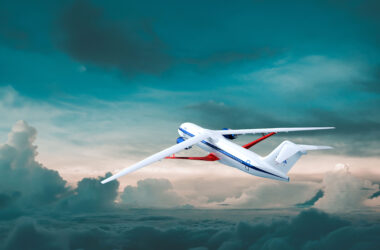The European Space Agency’s (ESA) Ariel exoplanet mission reached an important milestone on December 5th, 2023, when its preliminary spacecraft design successfully passed a key ESA review board.
This latest approval formally concludes Ariel’s initial design phase after 19 months of refinement to structural specifications and interface requirements. With the design now vetted, contractor Airbus Defence and Space will start manufacturing structural prototypes as Ariel progresses from conceptual “drawing board” blueprints towards flight model construction and planned launch in 2029.
What is the ESA Ariel Mission
The goal of Ariel is to analyze and measure the chemical makeup of atmospheres belonging to approximately 1,000 exoplanets outside our solar system. Detecting the presence and variability of ingredients like water, carbon dioxide, and metals will offer insights into planet formation, evolution pathways, and interplay with different host stars across a representative demographic sampling.

To enable these first-of-their-kind studies, Ariel will be equipped with a cryogenic telescope and two main science instruments: a spectrometer to gather high-resolution spectral data and an exemplary guidance system for precision targeting. Throughout its initial 4-year mission, the satellite will utilize transit spectroscopy during “crossings” and “occultations” to characterize temperature profiles, cloud structures, weather patterns, and atmospheric chemistry at an accuracy of 10-100 particles per million.
That means Ariel will measure the chemical composition of exoplanet atmospheres with extremely high precision, able to detect the presence of a compound even if it makes up just 10-100 molecules out of every 1 million particles in the atmosphere. This sensitivity to even tiny fractional abundances enables Ariel to pick up on faint chemical signatures through small but measurable changes in starlight passing through the exoplanet’s atmosphere.
What is Transit Spectroscopy?
Transit spectroscopy is a technique used to analyze the atmospheres of exoplanets (planets outside our solar system). It works by measuring starlight that has passed through a planet’s atmosphere when the world “transits” in front of its parent star, as seen from Earth.
As the planet passes in front of its star, some starlight gets filtered through its atmosphere. Molecules and compounds in the atmosphere absorb particular wavelengths (colours) of the starlight. For example, water in the atmosphere absorbs specific infrared wavelengths.
By precisely measuring which colours and wavelengths of light are “missing” when the starlight passes through the exoplanet’s atmosphere, scientists can identify which compounds and molecules exist in the atmosphere. This technique effectively characterizes the atmospheric makeup of exoplanets lightyears away.
- Transit: When an exoplanet crosses between us and its star from our viewpoint
- Spectroscopy: The measurement of colour and light at different wavelengths
- Transit spectroscopy: Analyzing the starlight interacting with the exoplanet’s atmosphere during transit. This allows scientists to determine the atmospheric composition.
Ariel Preliminary Design Phase
With Airbus holding design authority over the spacecraft, the preliminary phase focused extensively on subsystems such as structure, thermal properties, avionics, power, mechanisms, and control software.
According to Jean-Christophe Salvignol, Ariel’s Project Manager, “We are delighted that we have achieved a significant milestone in spacecraft design, marking a solid foundation to proceed with detailed development across all subsystems.” official approval permits the manufacturing of Ariel’s structural model, which will undergo challenging environment testing to confirm spaceworthiness, as well as an avionics prototype for verification of all electronics and flight software.
With the fundamentals in order, the next phase centres on flight model production, assembly, and evaluations.
The successful review clears the way for Airbus and ESA to finalize manufacturing blueprints and construct an actual flight spacecraft model. This will be subjected to additional studies, including the Critical Design Review, to certify all elements for space deployment. Assembly and integration testing will also occur before Ariel gets mounted atop an Ariane 6 rocket at Kourou spaceport in 2029, following the same trajectory as the Comet Interceptor mission.
If launched on schedule in 6 years, Ariel can START its ambitious spectral survey of alien worlds – determining atmospheric diversity, dynamics, and habitability. Ongoing work structuring a capable orbiter platform now transitions to making an operational reality.
Ariel stands at an exciting transitional phase, bridging design to production. With its recent successful spacecraft review, Ariel has passed a crucial milestone that advances development towards launch readiness later this decade. The path remains on track for this observatory to characterize exoplanets through unprecedented spectrographic mapping not possible from Earth, fulfilling a key goal of ESA’s Cosmic Vision science program in studying alien atmospheric properties and compositions.
TLDR:
- ESA’s Ariel exoplanet mission passed a critical preliminary spacecraft design review
- The approval allows prime contractor Airbus to build the structural model and avionics prototype.
- Successful milestone advances mission closer to the 2029 launch goal of analyzing 1,000 exoplanet atmospheres.
- The following focus areas are finalizing the flight model and additional quality reviews.
- The path remains on target to become the first dedicated satellite spectroscopically surveying the alien world’s atmospheric chemistry.








